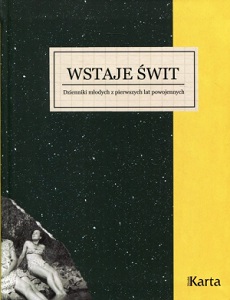
We kindly inform you that, as long as the subject affiliation of our 300.000+ articles is in progress, you might get unsufficient or no results on your third level or second level search. In this case, please broaden your search criteria.

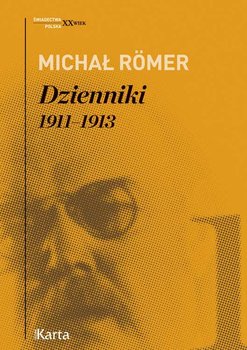
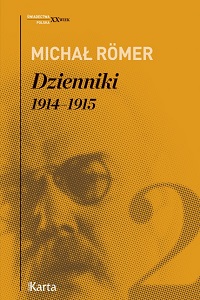
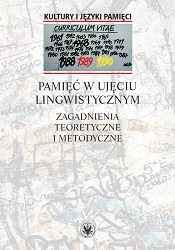
The articles by Polish and German researchers documenting the current state of studies on memory from a linguistic perspective. The papers show the diversity of theoretical and methodological approaches and thus they are an attempt to provide answers to the current questions about the relationship between language and memory. Memory is understood as a condition for individual and social communication, as well as an effect of language and communication synergy that makes certain images of the past part of individual and collective memory.
More...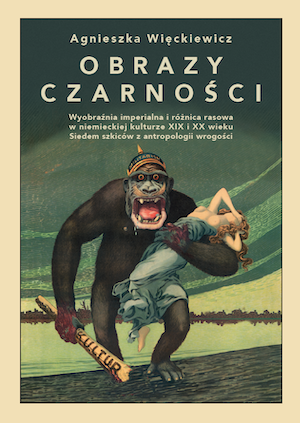
The first Polish anthropological study on German colonialism. It is an attempt to research the influence of German colonialism on German culture between 1884 and 1989 and show the complex character of the “enemy” figure in this context. The author presents the mechanisms of social exclusion from the end of the 19th century until present day. The German forms of racism, analysed in the book, are an effective tool in administering social fear and they ultimately go beyond the German context.
More...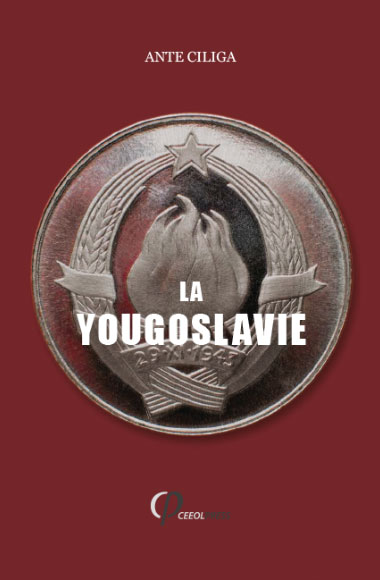
A former member of the Jugoslav Communist Party discusses the Tito-Stalin rupture and attempts to analyze the probable influence on the conflict of the earlier and unresolved struggle between Serb and Croat.
More...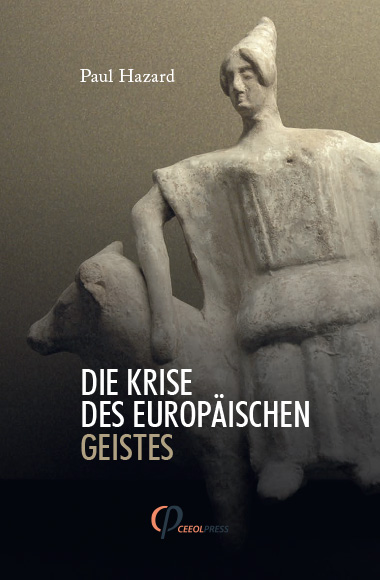
Paul Hazard's intellectual history offers an unforgettable account of the birth of the modern European mind in all its dynamic, inquiring, and uncertain glory. Beginning his story in the latter half of the seventeenth century, while also looking back to the Renaissance and forward to the future, Hazard traces the process by which new developments in the sciences, arts, philosophy, and philology came to undermine the stable foundations of the classical world, with its commitment to tradition, stability, proportion, and settled usage. Hazard discerned at the end of the seventeenth and the beginning of the eighteenth centuries a crisis within the European mind, a moment of profound uncertainty, une zone uncertaine, malaisée. Out of that crisis emerged a new understanding of people and nature, of government, of religion in society which, as he saw it, prepared the way for the French Revolution. At that moment emerged a mentalité discernibly enlightened and modern, one with which Hazard and his generation of liberal French intellectuals could still identify.
More...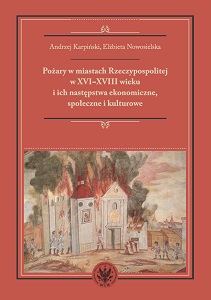
The monograph discusses the causes for early modern urban fires (wars, arson, lightning discharges, human carelessness), their number, extent, duration and frequency. It also refers to the biggest fire disasters in a dozen or so big and middle towns, their demographic, economic, social, political and architectural consequences as well as to fire safety regulations and attempts to prevent and extinguish fires.
More...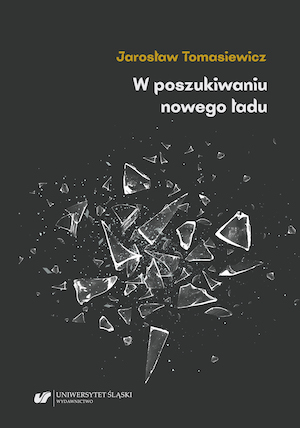
The subject of this book is an impact of fascism on Polish political and social thought of 1930s. The author presents authoritarian and pro-fascist tendencies both in political parties (the Piłsudskite camp, conservative milieu, Catholic movement etc.) and non-political circles (neo-pagans, Pan-Slavists, anti-Semites, technocrats, lawyers, war veterans, artists and others). This broad panorama of Polish political and social thought includes previously unknown groups and persons. The analysis of anti-liberal tendencies of the 20th century can also help to understand contemporary phenomena.
More...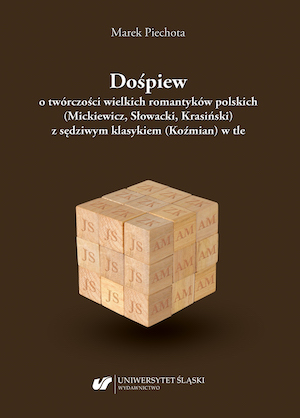
The term “swan song” used in the title is explained in the Foreword, which also contains the conviction that we have so far emphasised Romantic individualism too much, while nowadays, in the times of social relations dominated by leaders managing conflict (divide et impera), we should reassure the participants of cultural life that the Romantics also talked with the classics, and not only argued with them or fought with them – aesthetically, ethically, politically and socially. They also conducted a dialogue with each other, although sometimes the dispute became so heated that it looked like a duel. Romanticism will remain with us, sometimes as a warning, as long as we update our knowledge of this epoch and its creators. The publication consists of seven chapters very diversified in terms of subject and genre (there are essayistic statements, a classical historical-literary treatise and a scientific review of an important monograph...). Somewhat in the background, the book also reveals the backstage of the workshop of a scientist, humanist and erudite writer experienced in many years of research and writing practice...
More...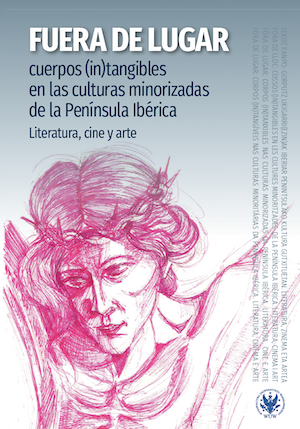
This volume aims to research how Catalan, Galician, Basque and Mirandese literature, cinema and art conceptualize alterity with a focus on the corporeal. The articles explore how the Other is constructed from the perspective of minority culture and how their own identities are created in reference to this Other. Furthermore, the authors reflect on how the dominant cultures (Spanish and Portuguese, respectively) inscribe otherness in minority cultures. They also examine the values attributed to the Other and how they manifested themselves through the body from both perspectives, they look at areas of alterity framed in the Catalan, Galician, Basque and Mirandese identities, their possible variants and their multidimensional character.
More...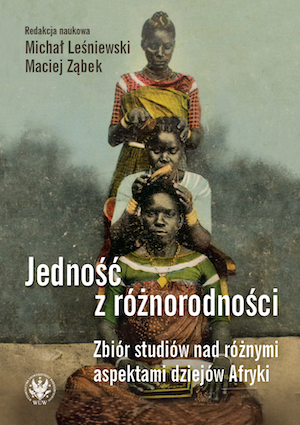
The volume is a collection of interdisciplinary studies on African history. The texts discuss, among others, the history of beer production in the Nile Valley, the significance of diseases for the exploration of Africa, personal stories and experiences of travellers, local history and geopolitics after the Second World War.
More...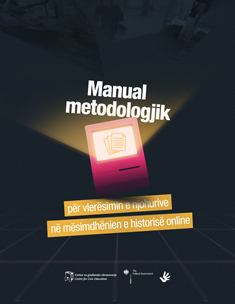
Transformimi i mësimdhënies nga qasja klasike në qasje online ka qenë sfidë e madhe për stafin mësimor dhe institucionet arsimore. Përpjekje e madhe është bërë në këtë proces përmes krijimit të sistemit të ri të punës dhe është e qartë se këtë sistem do ta zbatojmë në të ardhmen e afërt, të paktën edhe një herë, dhe se ende nuk kemi marrë rezultate konkrete të efikasitetit të tij. Gjatë krijimit dhe zbatimit të këtij sistemi u shfaqën disa sfida - si të kalohet nga klasa klasike në klasë virtuale; si të koordinohet mësimi në kohë reale me mësimin asinkron; dhe si të ndihmonin mësuesit dhe nxënësit në këtë rrugë? Sidoqoftë, sfidë e veçantë ishte vlerësimi i njohurisë. Nëse ndihmat teknike ofruan mundësinë për zbatimin e metodës së re të punës, në vlerësimin e njohurisë bota virtuale vetëm e ndërlikoi situatën. Siç pritej, u krijua varg strategjish dhe ndihmash që synonin të mundësonin teste klasike të njohurisë në botën virtuale, ose të përfitonin nga avantazhet teknike dhe përmbajtja multimediale për t’i bërë testet më të arritshme, efikase dhe interesante. Sidoqoftë, mbeti dyshim si në potencialin për transferimin e njohurive dhe zhvillimin e aftësive në botën virtuale, ashtu edhe në vlerësimin e tij, veçanërisht kur bëhet fjalë për vlerësimin e të kuptuarit. Nëse flasim për lëndën e historisë, veçanërisht në mësimin e temave komplekse, të ndjeshme dhe kontroverse, nevoja për zhvillimin e të kuptuarit të asaj që është mësuar në vend të transferimit të njohurisë është një nga rëndësitë themelore. Përveç pranimit të fakteve, shumë më e rëndësishme është që nxënësi të mund të japë shpjegim, të gjejë dëshmi dhe të japë shembull, të thjeshtojë, zbatojë (gjejë përdorim), të përdorë analogjinë dhe ta paraqesë temën në mënyra të reja. Ky manual u krijua me idenë për të siguruar një pasqyrë të sfidave dhe metodologjive në mësimin e historisë online, me qëllim të vlerësimit të njohurive të bazuara në rezultate dhe vlerësimit të njohurisë në mësimin e historisë që synonë të kuptuarit. Autorët shpresojnë që të paktën të lehtësojnë punën sfiduese të mësuesve të historisë dhe edukatorëve të tjerë të historisë.
More...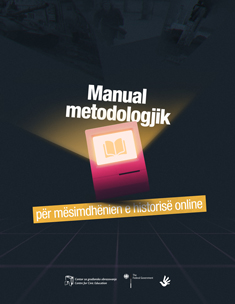
Shpërthimi i pandemisë COVID-19 ka sjellë mbylljen ose zvoglimin e ngarkesës së punës në shkollat malazeze. Si vijën e parë të mbrojtjes, Ministria e Arsimit ka krijuar udhëzimet bazë dhe një platformë online për mësimin në distance në shkollat fillore dhe të mesme. Baza e mësimit elektronit ishte e përbërë nga mësimi nëpërmjet videove, të cilat kan zgjatur 15 minuta dhe të cilat ne fund u renditën në një baze të dhënash në një platforme krijuar veçmas. Këto aktivitete dhe përpjekja e madhe e stafit arsimor, siguruan vazhdimëshinë e procesit arsimor. Megjithatë, kjo nuk do të thotë se ky lloj i mësimit nuk ka sfida të caktuara. Para se gjithash, udhëzimet e Ministrisë të Arsimit ishin të kufizuara. Ministria e Arsmit në një liste të shkurtër ka japur temat prioritare që do të mbulojë secila lënd. Mësimdhënësit nuk fituan as udhëzime mbi metodologjinë mësimore online që do t›i ndihmonte ata të transferojnë njohuritë ne mënyrë me efektive, as për metodologji të mësimit në distancë që do i ndihmonte nxënësit të zhvillojnë kompetenca. Gjithashtu mësimdhënësit nuk fituan as udhëzime për metodologjinë e vlerërismit të nxënësave dhe rezulatet e mësimit duke përdoruar mjete të reja. Aspekti i fundit është veçanarisht problematik, sepse jo të gjithë nxënësit kanë qasje të barabarta në materialin online, ndërsa mësimdhënësit duhen të sigurojne që ata mos te heqin dorë nga procesi arsimor dhe plani i përcaktuar. Gjithashtu, i gjithë materiali arsimor u regjistrua në kryeqytetin e Podgoricës. Mësimi online ne lënden e historisë i ka dhënë përparësi temave të njohurive të përgjithshme, duke kufizuar përpjekjet e mësimdhënësve për të mësuar tema të ndjeshme dhe kontroverse, si për shembull çështjen e pakicave, ose ato tema që zhvillojnë të menduarit kritik dhe analizën. Edhe pse kalimi në mësimdhënie të plotë ose të pjesshme ishte pjesë e masave emergjente gjatë pandemisë COVID-19, kjo gjithashtu duhet parë si një mundësi për përfshirje më të madhe të teknologjive të reja në procesin arsimor. Për ta arritur këtë, vetë mësimi duhet të bëhet më gjithëpërfshirës, me më shumë staf mësimor të trajnuar dhe të fuqizuar për të menduar në atë drejtim dhe për të përshtatur përdorimin e mjeteve online me nevojat e grupit të tyre nxënësor. Projekti “Mësimdhënia e Historisë gjatë Pandemisë COVID 19 - qasje e barabartë për të gjithë”, i zbatuar nga QAQ me mbështetjen financiare të Qeverisë së Republikës Federale të Gjermanisë, tenton t’u sigurojë mësimdhënësve malazezë mjete mësimore dhe trajnime online, me qëllim që t’ia mundësojn atyre që të përmbushin rezultatet e mësimit të përcaktuara në kurrikulën kombëtare por gjithashtu të mundësojnë më shumë zëra dhe përgjigje ndaj nevojave arsimore lokale. Kjo metodologji është rezultat i përfshirjes së asaj përvoje, por edhe përvojës dhe këshillës së kolegëve që morën pjesë në procesin e zhvillimit të materialit mësimor shtesë në internet dhe seminareve shoqërues, për të cilët autorët janë jashtëzakonisht mirënjohës. Me dëshirën e sinqertë për ta kthyer procesin arsimor në kuadrin e rregullt sa më shpejt që është e mundur, ne shpresojmë që materialet dhe metodologjitë mësimore të zhvilluara do të përdoren nga mësimdhënësit e historisë dhe lëndëve shoqërore në punën e ardhshme, por edhe në zhvillimin e mëtejshëm profesional.
More...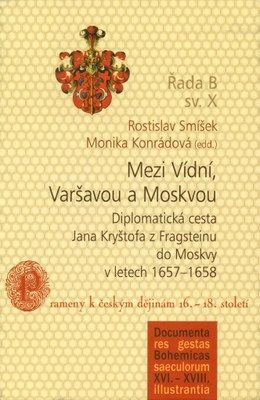
The edition presents letters and other documents relating to the diplomatic mission of Johann Christoph of Fragstein and Christoph Beuer von Binnen to Moscow between 1657 and 1658. Fragstein was a long-term resident in the Rzeczpospolita. His mission to Moscow sought to mediate in the international conflict between the Rzeczpospolita, Sweden, and Russia over the Cossack rebellion of Bogdan Khmelnitsky. The mission was concerned mainly with the hierarchical positions of the Emperor and the Tsar. The editors focuse mainly on anthropological observations of the travellers in Russia. This issue is discussed in the introductory essay. The edition includes the Imperial instruction and letters for aristocrats and Emperor Leopold I. The diplomatic reports and letters are written in German, but the introductory essay and comments are written in Czech. The e-book does not include pictures.
More...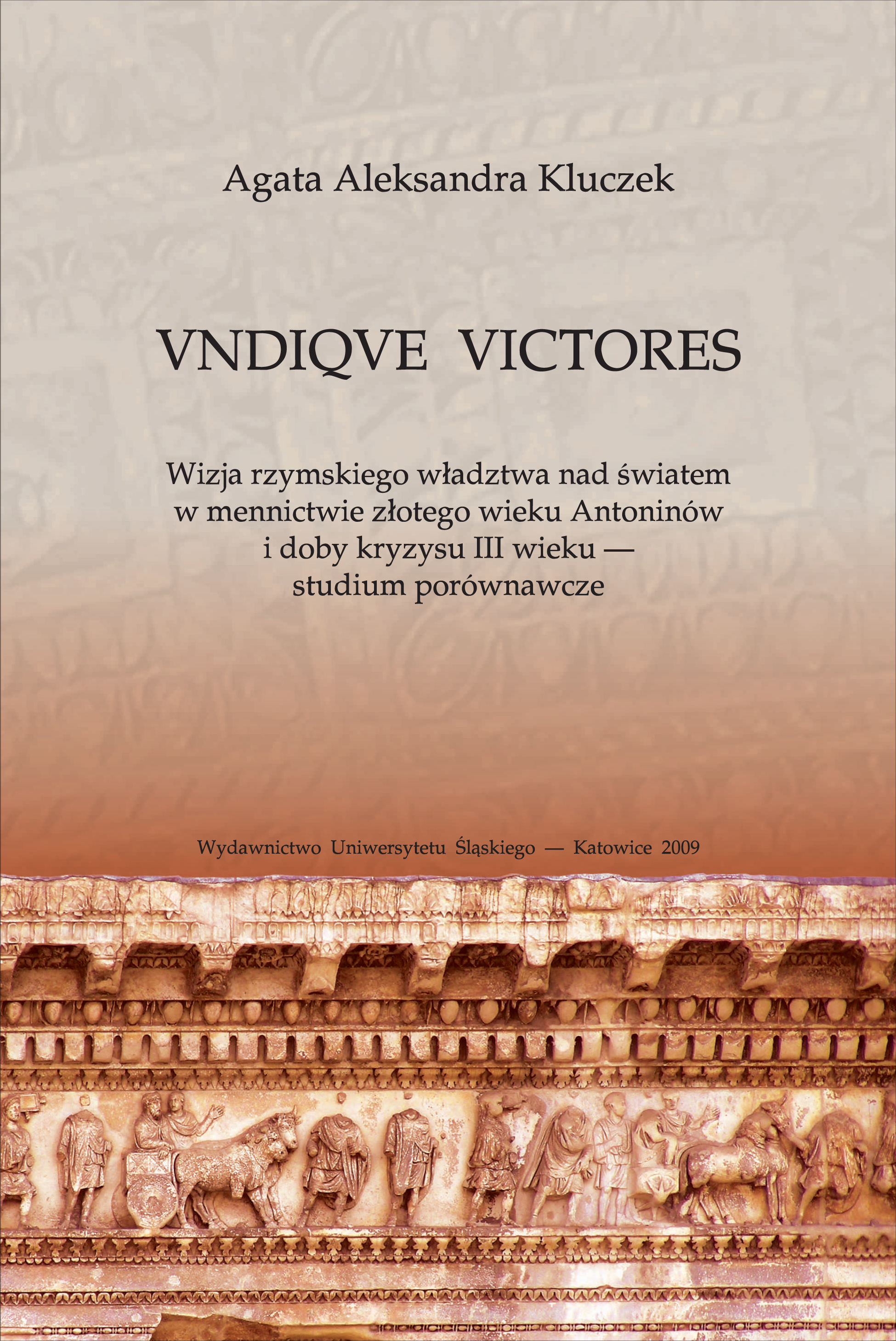
The work is devoted to the images of the Roman emperor’s power, its thematicbackground being the idea of the Roman rule over the world. The work aims to definethe scope within which the very idea was functions, and the way it was developedin the imperial propaganda of the Golden Age of the Antonine dynasty andthe times of the 3rd century crisis, as well as a comparison of the image of the Romancontrol over the world promoted in these two epochs, it constituting the mostimportant aim.The research task formulated in this way influences the fundamental basis of theanalysis, it being the numismatic sources. Imperial coins had a special impact on thetransmission of ideological information and motives in the Roman Empire. Besides,it is merely the imperial coins that constitute a homogeneous group of research explorationfor the two epochs and allow for the formation of a common and identicalbasis of inference. A disproportion of quantity and quality of other source materialscauses the situation in which an attempt to compare any of the propaganda motivesin the very periods of time, based on the analysis of other sources such as ancientli terature, epigraphics, monumental art — which fulfill the requirement of complementarinessonly for one at the epochs and are too few for the other one, is doomedto be fruitless. Nevertheless, the references to both of them will show the locationand understanding of some ideas in the Roman tradition, as well as update and explainor confirm what derives from the research on the imperial coins, them beingprimary for the issue in question.The work consists of two parts. The attention is paid to three categories, i.e.:Imperium Romanum, the world of Barbarians and the emperor, though they do notstrictly correspond to particular chapters. The first part entitled “Imago mundi”. TheRoman and the Barbarian worlds in numismatic sources attempts to reconstruct imagomundi or the structure of the world deriving from the monetary images. It is composedThe chapter Imperium Romanum: fines, provinciae discusses the borders and structureof the Roman state from a “geographical” perspective. It gives information ona poor presentation of the Roman borders in the imperial propaganda. It also providesa map of the Roman Empire which can be portrayed as a mosaic consisting ofvarious details: provinces, lands, towns, rivers or as a sum of some important areas.It indicates the role of an emperor in this whole as outlined in the propaganda onthe basis of the monetary issues reflecting “provinces”.The chapter Imperium Romanum: Roma depicts references in minting to Rome/Urbs, which was the germ of the world empire, as well as the way the Rome motivewas connected with the subject of Roman victories over alien peoples. The subjectof analysis is also the issue of legitimization of the emperor’s power. Thus, the deliberationsshow the sense and scope of Rome being treated by propaganda as caputmundi and sedes imperii. The very notions are treated in a geographical, but above all,meta phorical way. The former, caput mundi, concerns the primacy of Rome on a giventerritorial whole, the lather, sedes imperii, expresses the relationships between Romeand the ruler holding of imperium. The issues are outlined against the backgroundthe changes appearing in the Roman Empire and manifesting themselves in the discountof Rome’s political role in favour of provincial centres.The chapter Alter orbis presents a general structure and characteristic of the Barbarianworld as read out from the images on the imperial coins. It deals with suchissues as giving names to Barbarian tribes and peoples, the political organization ofthe Barbarians, the cultural diversification of those inhabiting the Barbarian world,a stereotypical picture of a northern and eastern Barbarian. Also, it considers the natureof the relationship between the Barbarians and Romans: in the imperial propagandait was defined by victoria Romana slogans, concerning mainly war confrontations,as well as rex datus slogans, in which case it refers to “peaceful” relations.The evolution of the representations of Barbarians in the imperial minting, from historicalto abstract ones, is also discussed here.The second part of the work “Gentium victor orbisque possessor”. The elements ofthe myth of a victorious emperor in the monetary images is devoted to selected aspectsof the myth of the world’s ruler. The motives that are related to Roman’s superiorityover alien peoples clarify the methods of becoming the lord of the world, thembeing fight and victory, as well as define an array of qualities of the one who is theruler of the world, and his aspirations for a common domination. This part is constructedof three chapters.The chapter Virtutes Augusti concerns an ideological image of the Roman rulerwho becomes the lord of the world thanks to his divine virtues and as a result ofhis war actions and achievements. The basic premise of the analysis is the presenceof the motive of a Barbarian or its equivalent in the monetary iconography. Accordingto this criterion the superiority and control of a Roman-emperor over the inhabitantsof the extra-Roman world are presented through several virtues such as: virtusAugusti, victoria Augusti, clementia Augusti and felicitas Augusti.The chapter Undique victores — ubique barbari concerns various semantic fieldsin which the Barbarian motive which was the function of a victorious ruler mythappeared in the iconography of coins. They are subjected to the three main issues:fight, submission and dominance while the image of the victorious emperor can beplaced on two levels: the theatre of the victories over the external enemies and thetheatre of the political advantage over the neighbouring countries; and the spheresof three chapters.of life in which the power of the winner is realized. The creation of an emperor asthe lord of the world is presented here in its dynamic dimension, i.e. in the courseof becoming the ruler of the (whole) world, not just remaining the head of the Romanstate. The Roman control over the world can only be realized in action, mainlyin the armed fight.The chapter Rector orbis concernes the extent of the Roman emperor’s worldcontrol, defined by such notions as: orbis (terrarum) and genus humanum. These areset in a wide semantic field. They do not denote a definite area or a real territory,but are always subordinate to ideological-political reasons and can be understoodas the Roman world or as the whole world. It allows for placing the issue of ruleover the world in the sphere of reality or abstraction. Also, it shows the developmentof the thought of the Roman control over the world in the ideology of the Romanemperor’s power, and attempts to explain the origin of an increasing popularityof the subject-matter in question.The work distinguishes thematic groups of the representations on the imperialcoins which reflect the image of the Roman rule over the world. In the propagandistimago mundi the world is divided into two parts. One of them is structured by whatis Roman: the Roman Empire, its lands, provinces, towns, and Rome/Urbs as the firstcentre among them. It is complemented in its imago mundi with what belongs to theother element, that is the world of Barbarians. Its image is created by, among others,those lands, peoples, tribes, small countries and countries the Romans fought with.On a narrow margin of the map of the outside world, formed in this way, remainthe lands inhabited by Barbarians who, came to terms with the Romans, respectingtheir primacy and power. The axis of division between Imperium Romanum andthe world of Barbarians is an ideological border. It stems from the permanent imageof the Romans’ superiority over Barbarians and the idea of victoria, fundamental fordefining their relations. Barbarians, however, in hierarchy, are higher than the Romans.The alien world, “Barbarian” in the imperial propaganda, does not functionindependently. It exists only in order to make the Romans win over its inhabitantsand subordinate them, and derives from the monetary images only as a product ofthe current political situation concerning the Roman state. The world of Barbarians“comes into being” as a result of the Romans’ activity. Even though the Romans’ wardeeds and victories have only a symbolic, and not real dimension, they conditionsine qua non the existence of the world of Barbarians. On the other hand, the Romanworld “exists”. Its existence is “passive” in nature as compared to the origin of theworld of Barbarians which manifests itself in the propaganda only as a result of theRomans’ “activity” . It generates the problem of restricting the scope of the rule already“passively” possessed by the Romans and the fact that it is in fight and actionthat the myth of a great victor and the ruler of the (whole) world is born. Only suchan action will derive the elements of the outer world from the nothingness, and definethem, at the same time always subordinating them to Rome. The victory and itsfruits are available for the Roman thanks to the qualities summed up by the notionof virtus bellica. The “reverse” of the on Roman’s portrait is the one of a Barbarian.The latter, on the other hand, always remains passive, but it is his presence that releasesthe Roman’s qualities and makes him the ruler of the whole world, irrespectiveof the territorial extent of this propagandist creation.In the microcosm that the world creates in the imperial propaganda, the Romanemperor is the focal point. It is the meeting point of the two big parts situated onboth sides of the ideological axis and the link joining them. It is the emperor’s militaryand diplomatic actions, reduced to simple monetary images, that account forintricacies and arcana of the Roman policy towards the inhabitants of the Barbarianworld. They also order the structure of the world as the emperor is the ruler ofthe Roman world while his identification as the head ruler of the whole world takesplace in contact with Barbarians. What is important in the definition of the emperorin his role of the lord of the world is the iconographical motive of the Barbarianwhich refers to capturing, above all, in fight, the control over the world. In its basicform, the image of the Roman-rule over the world remained the same in the monetarypropaganda of the Golden Age of the Antonine dynasty and the third centurycrisis. The change for worse of the relations in the outer position of the Roman Empirein the third century in comparison to its situation in the second century, whichdeepened the ideological barrier between the Romans and the Barbarians caused thesituation in which the Barbarian evokes the worst associations, becoming the personificationof evil and destructive forces coming from the outside, and the conceptof the Roman-victor finds his dimensions not only in reality but in the supernaturalsphere as well.Each monetary image, composed of an icon and, usually, an inscription, detailedout in the descriptive and analytical part of the work, has three semantic layers whichenlighten each other and promote the title issue on various levels of abstraction. Theyare: the manifested sense (a visualization and description), the primary sense (primaryconnotations), the hidden sense (secondary connotations).The method of a gradual penetration into these different formula until the deepeststructures of an informative transmission allows to state that the idea of a largeworld empire and the Romans subordinating other peoples to their power was constantlydeveloped in the monetary propaganda. It also permits the general observationthat in it the monetary image, defined by the VNDIQVE VICTORES legend, isthe most accurate explanation of the conception of the world’s empire and the ideaof the Romans’ superiority over the alien. The monetary contents refer to the threelevels of the representation on which the problem of the Roman rule over the worldappeared. These are: the structuring of the world, defining the relations between theRomans and the aliens, constructing the features of the Romans and the Barbariansby juxtaposing them.The undique victores slogan also defines the understanding of the Roman rule overthe world in a dynamic sequence, referring to the process of gaining, confirming orbroadening the Roman domination. The myth of the rule over the world was dominatedby the war-victorious conception both in the period of the Antonine monarchyand in the time of the 3rd century crisis. However, the stylistics was different inboth of them. As a result of different influences, the propaganda of these two differentepochs brought about two parallel images of the Roman presence in the world,with a constant recognition of the Roman lead in it. There exists the Roman world thelord of which is the emperor. Beyond this circle there is yet another world the existenceof which is evoked by the emperor’s activity. In this sense, the Roman emperor,undique victor, is in charge of the structure and order of the (whole) world in theepoch of the Antonine dynasty and the period of the 3rd century crisis. Though, thereare different images of him. He can be the one who realizes a debellare superbos call oranswers the parcere subiectis appeal. He can be the one who guards the Roman estatesor goes beyond them. His victory may refer to the real sphere or cross it, his fightmay have all the hallmarks of an offensive fight or the one conducted only to defendthe state of possession. Invariably, though, it is him who is the measure of the world.Above all the emperor remained the lord of the Roman world, ideologically orientedaround the Roma motive. Excursions in the monetary images to the outer worldare the phenomenon which, in the propaganda of both epochs, causes the greatestamplitudes in the images of the Roman rule over the world. Different solutions ofthe same issues applied in the period of the Antonine monarchy and the 235—284half-century prove that there existed a strong interdependence between the generalpoli tical situation of Imperium Romanum and the imperial propaganda. In the coinageof the Golden Age of the Antonine dynasty, the strong empire, winning over thefights with Barbarians, the motive defining the emperor as the ruler of the world wasless important than in the period of the 3rd century crisis when contrary to the difficultsituation of the Roman state, wider possibilities of the understanding of the ideaas a call to rule over alien nations, with the recognition of the confinement of the actualRoman world were observed. It always, however, gave the attractiveness of theidentification with what was Roman.The nature of the research problem is a comparison of the presence of the titleidea in two selected epochs. The search covers: common and different features ofthe monetary propaganda cultivated in them (universalizing comparisons), speci ficsolutions in narrower time spaces, constituting two epochs (variant comparisons),unique images defining the originality of the propaganda of definite emperors (individualizingcomparisons).The tables serve the purpose of highlighting the differences and similarities ofthe propaganda. They illustrate the presence or absence of given topics in the imperialminting and ideological concept of both epochs in their shorter phases: 96—117,117—161, 161—192, as well as 235—249, 249—268/269, 268—284. Operating with longchronological distances, defined by the duration of the Golden Age of the Antoninedynasty and the third century crisis, allowed to capture the general tendencies in thepropaganda of both epochs. The interactions between the political policies of the rulers,events and atmosphere they evoked, the extent of the development of the ideologyof the imperial power, on the other hand, gave different images of the Roman ruleover the world as a result of mutual permeation in their particular phases.
More...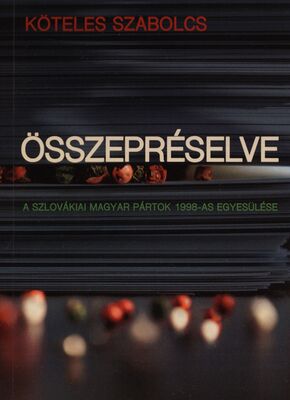
The author argues that the unification of the three Hungarian parties in Slovakia in 1998 was brought about by external pressure (the new autocratic electoral law): the parties would not have united on their own, and once the external pressure was removed, the agreement dissolved.
More...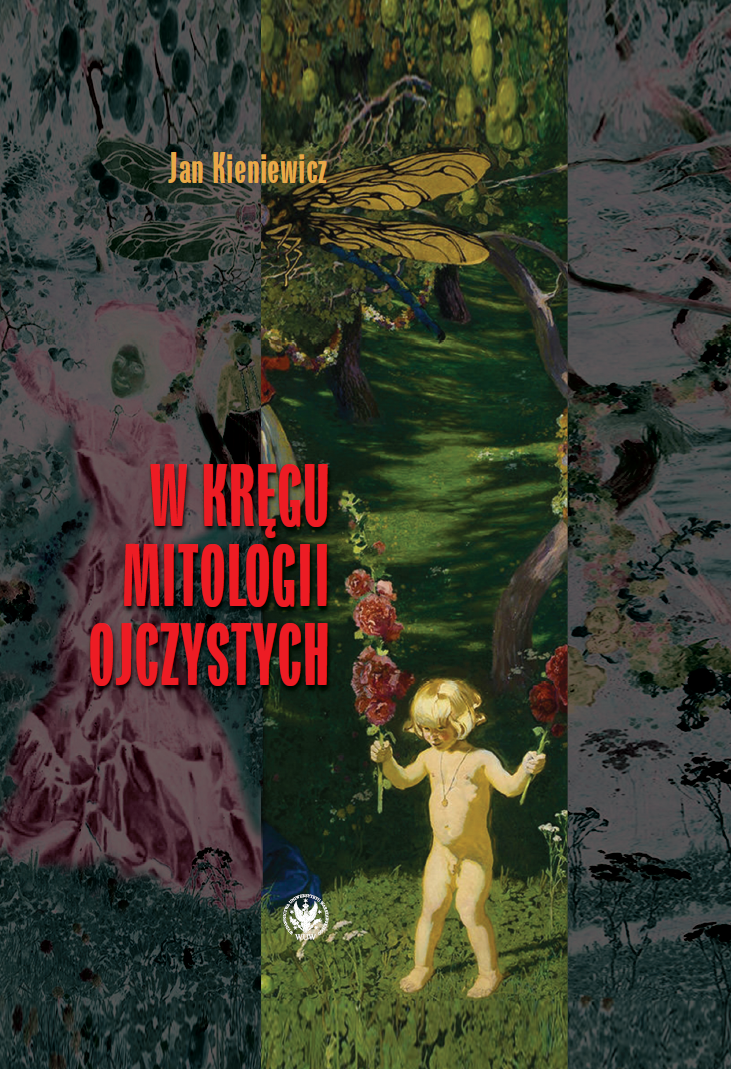
This book of (scholarly) essays reflects on the natives mythologies of Poles – on traces left in the collective memory of mythologies of the nobility, the intelligentsia, and plebeian mythologies. The author addresses the issue of mythology’s perseverance, trying to see if old mythologies – like those of the nobility and the intelligentsia, Sarmatian or Romantic, nationalist or revolutionary ones – are still present in our lives. He also ponders the role played by mythologies in the shaping of society’s relationship with the natural environment.
More...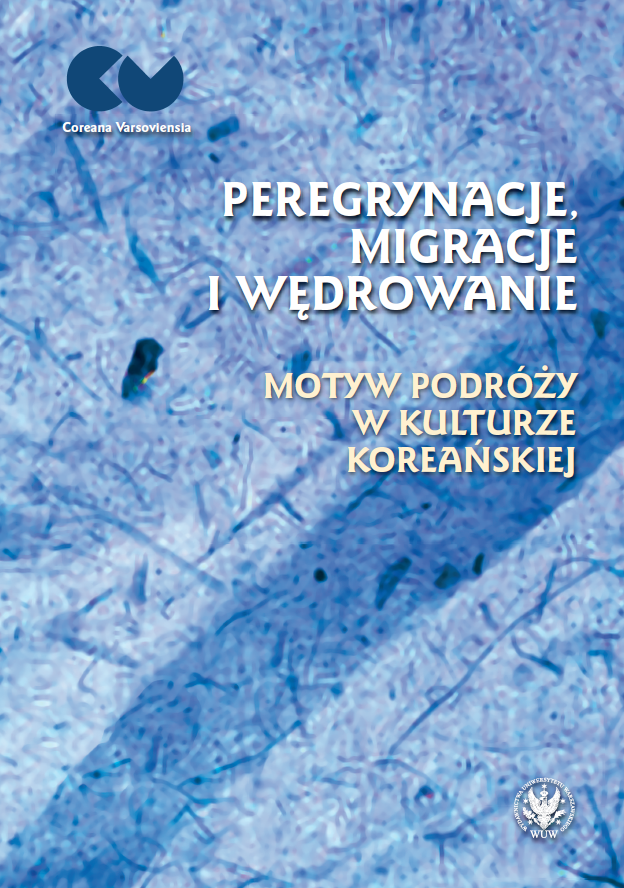
The authors analyse the topic of travel from geographical, literary, historical, pop cultural and linguistic perspectives. At the centre of their reflections is the belief in the significant role which, over the centuries, travel has played in the process of shaping national and individual identity of the Koreans.
More...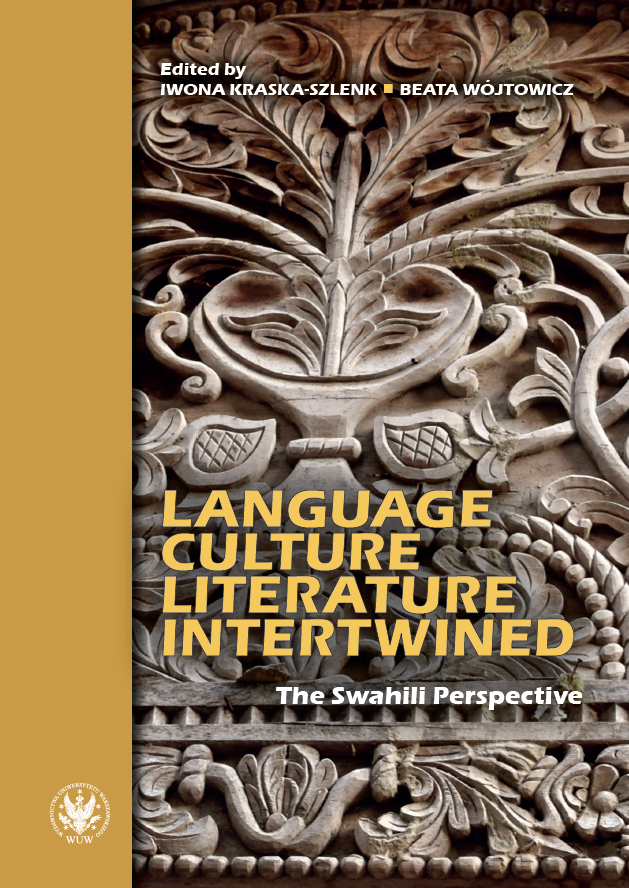
Swahili is recognized as an important international language and ranks first among African languages taught to foreigners. This publication presents Swahili in its cultural setting by discussing selected issues pertaining to social values reflected in language usage and literary tradition, as well as issues of modern terminology and pragmatics. All contributions contain original and novel proposals, showing that the interdependence between language and culture can take many forms and can be analyzed from various perspectives.
More...